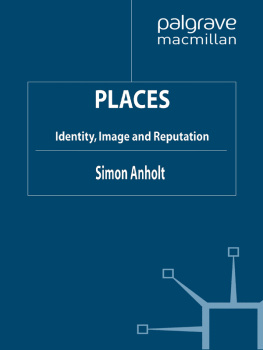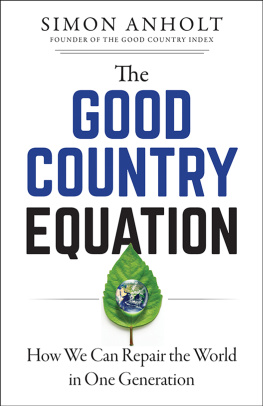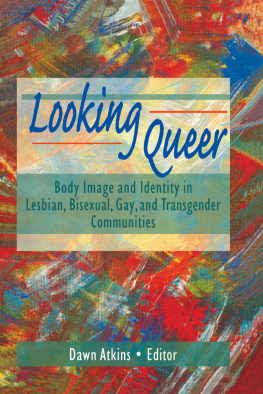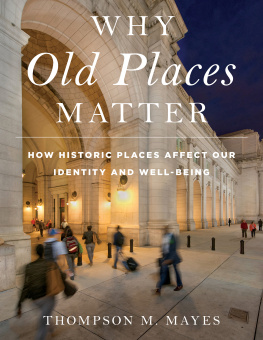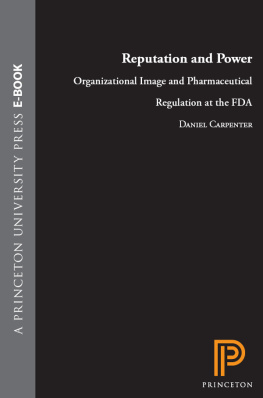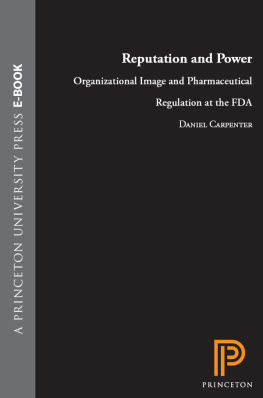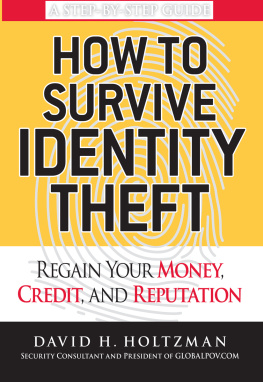Simon Anholt - Places: Identity, Image and Reputation
Here you can read online Simon Anholt - Places: Identity, Image and Reputation full text of the book (entire story) in english for free. Download pdf and epub, get meaning, cover and reviews about this ebook. year: 2009, publisher: Palgrave Macmillan, genre: Politics. Description of the work, (preface) as well as reviews are available. Best literature library LitArk.com created for fans of good reading and offers a wide selection of genres:
Romance novel
Science fiction
Adventure
Detective
Science
History
Home and family
Prose
Art
Politics
Computer
Non-fiction
Religion
Business
Children
Humor
Choose a favorite category and find really read worthwhile books. Enjoy immersion in the world of imagination, feel the emotions of the characters or learn something new for yourself, make an fascinating discovery.
- Book:Places: Identity, Image and Reputation
- Author:
- Publisher:Palgrave Macmillan
- Genre:
- Year:2009
- Rating:3 / 5
- Favourites:Add to favourites
- Your mark:
- 60
- 1
- 2
- 3
- 4
- 5
Places: Identity, Image and Reputation: summary, description and annotation
We offer to read an annotation, description, summary or preface (depends on what the author of the book "Places: Identity, Image and Reputation" wrote himself). If you haven't found the necessary information about the book — write in the comments, we will try to find it.
Simon Anholt: author's other books
Who wrote Places: Identity, Image and Reputation? Find out the surname, the name of the author of the book and a list of all author's works by series.
Places: Identity, Image and Reputation — read online for free the complete book (whole text) full work
Below is the text of the book, divided by pages. System saving the place of the last page read, allows you to conveniently read the book "Places: Identity, Image and Reputation" online for free, without having to search again every time where you left off. Put a bookmark, and you can go to the page where you finished reading at any time.
Font size:
Interval:
Bookmark:
Simon Anholt


Simon Anholt 2010
All rights reserved. No reproduction, copy or transmission of this publication may be made without written permission.
No portion of this publication may be reproduced, copied or transmitted save with written permission or in accordance with the provisions of the Copyright, Designs and Patents Act 1988, or under the terms of any licence permitting limited copying issued by the Copyright Licensing Agency, Saffron House, 610 Kirby Street, London EC1N 8TS.
Any person who does any unauthorized act in relation to this publication may be liable to criminal prosecution and civil claims for damages.
The author has asserted his right to be identified as the author of this work in accordance with the Copyright, Designs and Patents Act 1988.
First published 2010 by
PALGRAVE MACMILLAN
Palgrave Macmillan in the UK is an imprint of Macmillan Publishers Limited, registered in England, company number 785998, of Houndmills, Basingstoke, Hampshire RG21 6XS.
Palgrave Macmillan in the US is a division of St Martin's Press LLC,
175 Fifth Avenue, New York, NY 10010.
Palgrave Macmillan is the global academic imprint of the above companies and has companies and representatives throughout the world.
Palgrave and Macmillan are registered trademarks in the United States, the United Kingdom, Europe and other countries.
ISBN-13: 978-0-230-23977-7
This book is printed on paper suitable for recycling and made from fully managed and sustained forest sources. Logging, pulping and manufacturing processes are expected to conform to the environmental regulations of the country of origin.
A catalogue record of the book is available from the British Library.
A catalogue record for this book is available from the Library of Congress.
10 9 8 7 6 5 4 3 2 1
19 18 17 16 15 14 13 12 11 10
Printed and bound in Great Britain by
CPI Antony Rowe, Chippenham and Eastbourne
For Alexandra, Claudia and Luca
Let me be clear: there is no such thing as nation branding. It is a myth, and perhaps a dangerous one.
In books and papers and lectures and talks over the last few years, I have repeated such sentiments so many times that somebody commented to me a while ago that I now spend more time explaining what I dont mean than what I do mean, and more time telling people what my subject is not about rather than what it is about.
This is disconcerting, but not surprising. In one sense Im still paying the price of a careless piece of branding I did 14 years ago, when I coined the phrase nation brand. I little guessed how potent the combination of those two little words would prove to be, or what a double-edged sword the idea of branding would become when applied to countries, cities and regions.
On the one hand, brand is a perfect metaphor for the way places compete with each other in the global marketplace for products, services, events, ideas, visitors, talent, investment and influence: this is simply the reality of globalization, and its inescapable. On the other hand, branding makes many people think of superficial marketing tricks, perhaps even some cynical betrayal of the nation state and other human communities. This is a misunderstanding, and an unfortunate one for many reasons.
These days I use the B-word less and less, but it is still a useful metaphor and hard to dispense with altogether. It pops up fairly frequently in this book partly because several of the essays I have included are my editorial prefaces from a journal I launched in 2004 and still edit, Place Branding and Public Diplomacy. I often refer to the international research programmes I have been conducting since 2005, the Anholt Nation Brands IndexTM and Anholt City Brands IndexTM. I also quote from my previous books Brand NewJustice and Brand America amongst others. So, try as I might, I cannot escape completely from the B-word, since it is attached to so much of my work. To some, it may seem perverse that I constantly try; but words are important, and it is problematic to have a word which many associate with superficiality and cynicism attached to a field of study and practice which, at least in my view, is most emphatically the opposite.
So, with apologies to regular readers of my work, I must once again preface this book with a brief summary of my basic position on the issue of places and their reputations.
Nations may have brands in the sense that they have reputations, and those reputations are every bit as important to their progress and prosperity in the modern world as brand images are to corporations and their products but the idea that it is possible to do branding to a country (or to a city or region) in the same way that companies do branding to their products, is both vain and foolish. In the 15 years since I first started working in this field I have not seen a shred of evidence, a single properly researched case study, to show that marketing communications programmes, slogans or logos, have ever succeeded, or could ever succeed, in directly altering international perceptions of places.
In fact there is some evidence to suggest the opposite: between 2005 when the Anholt Nation Brands Index was launched, and the latest study in 2009, there has been no detectable correlation between changes in national image and expenditure on nation branding campaigns. Several countries which have done no marketing (aside from normal tourism and investment promotion) during this period have shown noticeable improvements in their overall images, while others have spent extremely large sums on advertising and PR campaigns and their brand value has remained stable or even declined.
I continually repeat this mantra partly because I long to be contradicted. It would be fascinating to see some evidence that international perceptions of countries really can be influenced by marketing communications techniques, and such proof would have important, far-reaching and frankly rather alarming consequences. Yet I have seen no such evidence, nor even heard any very convincing arguments in favour of it: I see a good deal of research showing that tourism campaigns can persuade people to go on holiday to a certain country, but theres nothing surprising or controversial about that everybody knows that products or services can be effectively sold to a target audience using marketing communications. And I occasionally see research showing that nation-branding campaigns are effective in so far as they succeed in creating awareness and even recall amongst certain target audiences, but theres nothing surprising about that either. If you repeat a slogan frequently enough, people will end up recognizing it, and may even be able to repeat it when asked. Whether it actually has the power to alter their opinions and their behaviour towards that country is quite another matter.
Yet all around the world, in country after country and city after city, such marketing campaigns are cheerfully sold to governments, and billions of dollars of public money are spent producing them and placing them in the media, where they disappear without a trace.
In truth, nation branding is the problem, not the solution. It is public opinion which brands countries in other words, reduces them to the weak, simplistic, outdated, unfair stereotypes that so damage their prospects in a globalized world and most countries need to
Font size:
Interval:
Bookmark:
Similar books «Places: Identity, Image and Reputation»
Look at similar books to Places: Identity, Image and Reputation. We have selected literature similar in name and meaning in the hope of providing readers with more options to find new, interesting, not yet read works.
Discussion, reviews of the book Places: Identity, Image and Reputation and just readers' own opinions. Leave your comments, write what you think about the work, its meaning or the main characters. Specify what exactly you liked and what you didn't like, and why you think so.

